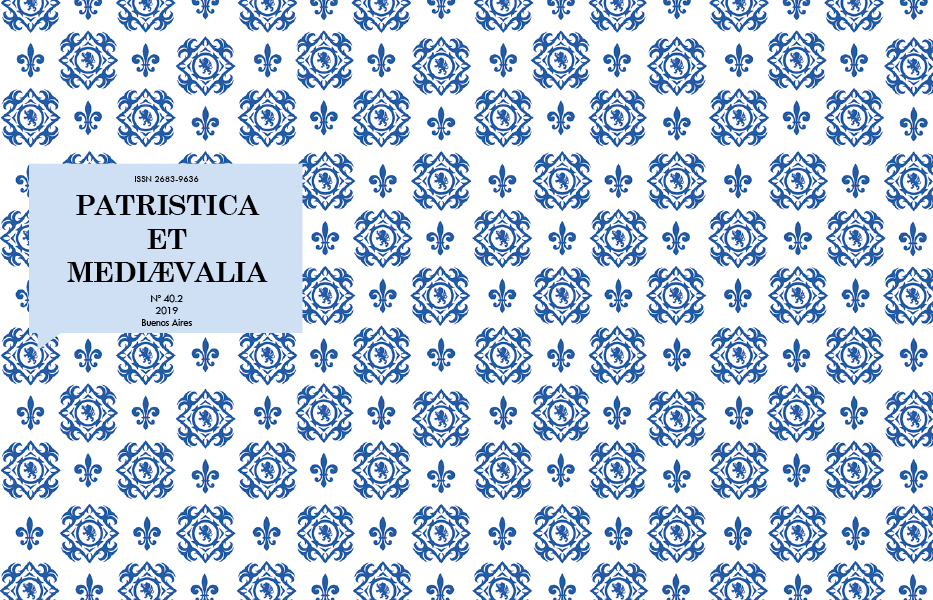Hand and face The philosophy of expression in Leonardo da Vinci and Marsilio Ficino
Abstract
The present paper focuses on Marsilio Ficino and Leonardo da Vinci. Both authors describe the human production of artifacts as transformative principles that affect the world from both a technical and an aesthetic viewpoint. In this light, manus and risus become the strongholds of a typically Renaissance anthropology, according to which the homo faber rises to that godlike status which plays a major role in Nicholas of Cusa’s philosophy; while the human hand is the active transformative principle, the smile is the sign of an accomplished work. In sum, these two aspects unveil a process of spiritualization of reality, i.e., the perfect interpenetration of beauty with virtue and truth. This paper will explore the similarities between the two authors also with reference to Leonardo da Vinci’s portrait of Ginevra de’ Benci (1475-1478 ca.), a very special picture sermon, with the back of the table being a concise philosophical treaty that reads “virtutem forma decorat”, a formula which evokes Ficino’s Convivium.Downloads
References
André, J. M. (1999). “O Homem como Microcosmo. Da concepção dinâmica do homem em Nicolau de Cusa à inflexão espiritualista da anthropologia de Ficino”, Philosophica 14, 7-30.
Blumenberg, H. (1996). Die Legitimitat der Neuzeit. Frankfurt a.M.: Suhrkamp.
Bongioanni, D. (1935). Leonardo pensatore. Saggio sulla posizione filosofica di Leonardo da Vinci. Plasencia: Soc. Tipografica Ed. Porta.
Cacciari, M. (2016). “Ripensare l’Umanesimo”. En Egbi, R. (ed.). Umanisti italiani. Pensiero e destino. Turín: Einaudi.
Cassirer, E. (1950). Individuo e cosmo nella filosofia del Rinascimento. Trad. it. Federici, F. Florencia: La Nuova Italia.
Chastel, A. (1975). Marsile Ficin et l’art. París: Droz.
Chastel, A. (1988). “L’artista”. En Garin, E. (ed.). L’uomo del Rinascimento. Roma-Bari: Laterza, 239-269.
Cuozzo, G. (2019). “Das Paradox als sprachliche Möglichkeit in der philosophischen Erkenntnistheorie. Von Cusanus zur Postmoderne”, MFCG 35, en prensa.
de Gandillac, M. (1992). Genèse de la modernité. De la “Cité de Dieu” à la “Nouvelle Atlantide”. París: eds. du Cerf.
Dupré, W. (1964). “Die Idee einer neuen Logik bei Nikolaus von Cues”, MFCG 4, 357-374.
Forti, F. (1967). “La ‘transumptio’ nei dettatori bolognesi e in Dante”. En Dante e Bologna nei tempi di Dante. Bolonia: Facoltà di Lettere e Filosofia dell’Università di Bologna.
Garin, E. (1988). “Il filosofo e il mago”. En L’uomo del Rinascimento. Roma-Bari: Laterza, 169-202.
Garin, E. (1998). La cultura del Rinascimento. Milán: Il Saggiatore.
Gombrich,E. H. (1972). Immagini simboliche. Studi sull’arte del Rinascimento. Turín: Einaudi.
Haubst, R. (1952).Das Bild des Einen und Dreieinen Gottes in der Welt nach Nikolaus von Kues. Tréveris: Paulinus. (Trierer Theologische Studien Bd. 4).
Hirdt, W. (2002). Bildwelt und Weltbild. “Die Drei Philosophen” Giorgiones. Tubinga: A. Franke.
Kristeller, P. O. (2005). Il pensiero filosofico di Marsilio Ficino. Florencia: Le Lettere.
Löwith, K. (1949). Meaning in History. The Theological Implications of the Philosophy of History. Chicago: University of Chicago Press.
Malagoli, L. (1949). Linguaggio e poesia nella Divina Commedia. Génova: Briano.
Marzot, G. (1956). Il linguaggio biblico nella Divina Commedia. Pisa: Nistri-Lischi.
Moore, M. E. (2013). Nicholas of Cusa and the Kairos of Modernity. Nueva York: Punctum.
Oliviero, F. (1936). The Representation of the Image in Dante. Turín: S. Lattes e C.
Pareyson, L. (1971). Verità e interpretazione. Milán: Mursia.
Singer, C., Holmyard, E. J., Hall, A. R. y Williams, T. I. (eds.) (2013). Storia della tecnologia. (v. 3/2: Il Rinascimento e l’incontro di scienza e tecnica). Turín: Bollati Boringhieri.
Solmi, E. (1905). Nuovi studi sulla filosofia naturale di Leonardo da Vinci. Il metodo sperimentale. L’astronomia. La teoria della visione. Mantua: G. Mondovì.
Zöllner, F. (2010). Leonardo da Vinci. Sämtliche Gemälde und Zeichnungen. Colonia: Taschen.
1. The authors who publish in this magazine accept the following conditions:
-
They retain the copyright and grant to the magazine the right of the first publication, with the work registered under the Attribution-ShareAlike 4.0 International License that allows third parties to use what is published as long as they mention the authorship of the work and the first publication in this magazine.
-
They can make other independent and additional contractual agreements for the non-exclusive distribution of the version of the article published in this magazine (eg. include it in an institutional repository or publish it in a book) provided that they clearly indicate that the work was first published in this journal.
-
They are allowed and recommended to publish their work on the Internet (for example on institutional or personal pages).
2. AutoArchive Conditions. Authors are allowed and encouraged to distribute post-print electronic versions of their manuscripts because it promotes their circulation, a possible increase of quotation and a major reach among the Academic community. Color RoMEO: blue.













